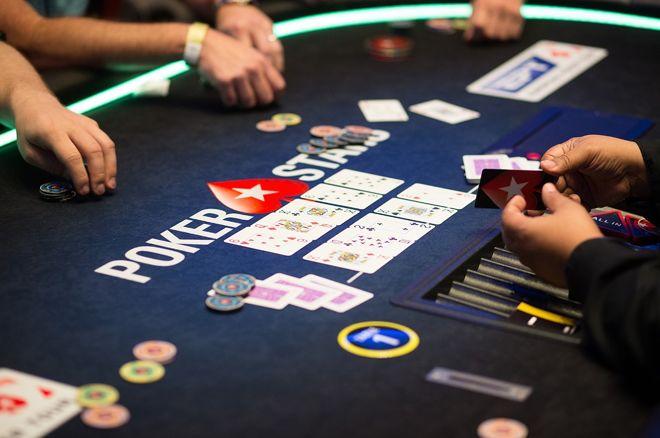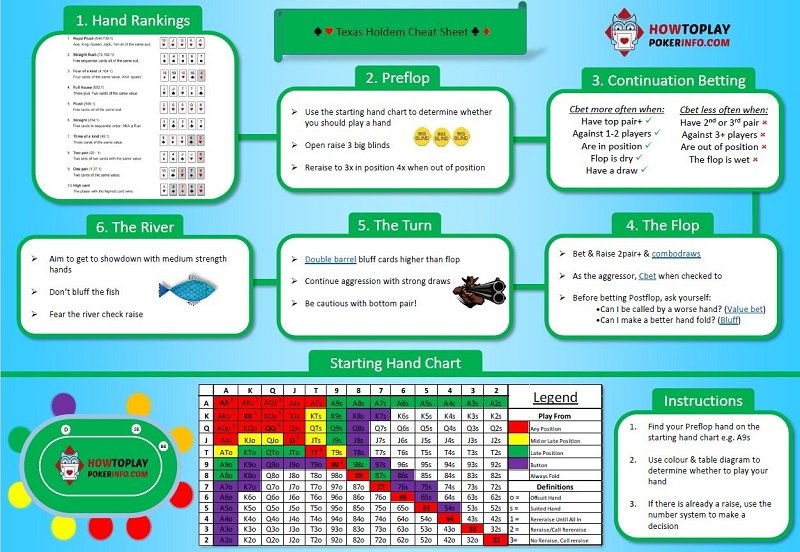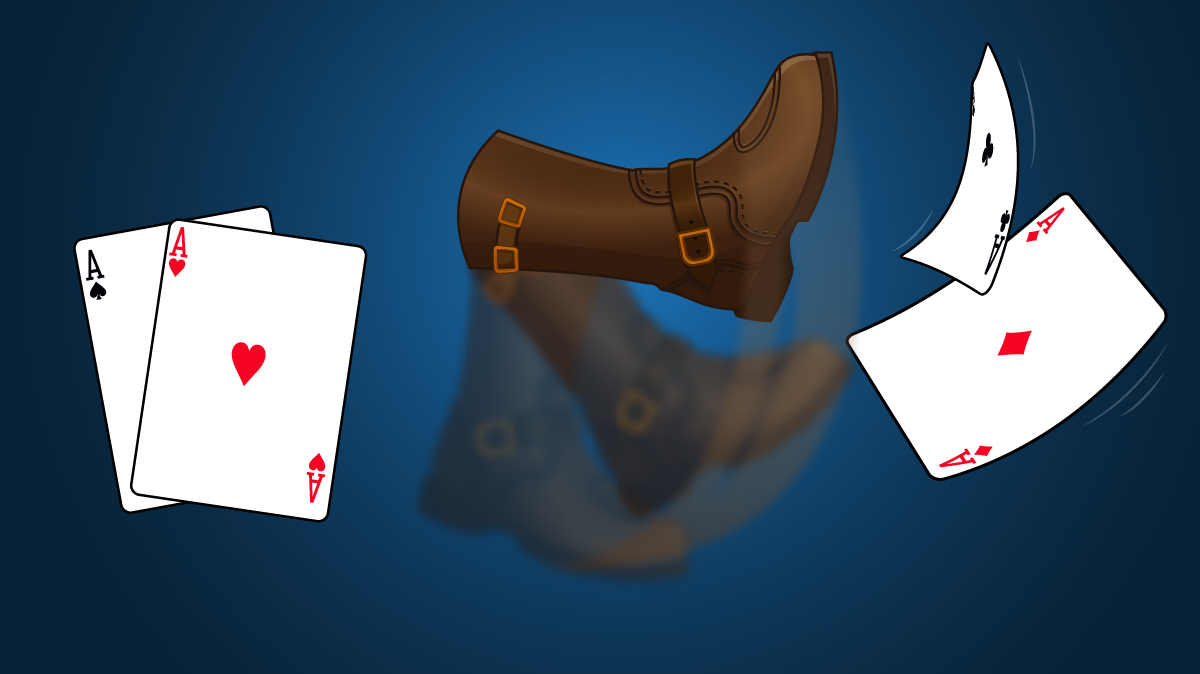Poker Split Pot Odd Chip
Aug 18, 2012 In any split pot game, say it gets to showdown and there's one winner for high, and the two players will split the low. I've divided the pot into two e splitting the pot - chop half before awarding odd chip - Home Poker Games - Home Poker Forum. Example of Split Pot used in a sentence - In the split pot Stud game Chicago, a high spade in the hole wins half the pot. How to Use Split Pot as Part of Your Poker Strategy. Novice split pot players generally try and compete for one half of the pot. They will either try to make the best low hand or the best high hand. However, the real.
The rules of poker cover a wide range of unusual situations, including some that even experienced poker players may not have encountered or paid much attention to before.
Here are five poker rules from a variety of different poker games that not everyone may know about, even though in some cases they should.
1. Do You Have to Bet the Nuts on the River?
Those who watch a lot of televised tournament poker might be aware of this rule, as will most experienced tournament players. However even those who play a lot might not have personally faced this particular situation and so might not be aware of the rule requiring you to bet when holding the best possible hand when last to act on the final betting round.
The rule is enforced in tournaments at the World Series of Poker and elsewhere (though not everywhere). To give an example, a player holds and watches as an opponent checks the river with the board showing . The player checks back and shows down the ace-high flush — an unbeatable hand on that board. That player would then incur a penalty and be made to sit out a hand or more (at the tournament director's discretion).
The reason for the rule is to prevent collusion or 'soft play' between players, although in most cases a player checking back the nuts often does so without realizing he or she has an unbeatable hand. In the above example, for instance, the player might have missed the backdoor flush having arrived and simply checked back only thinking about the vulnerable-seeming flopped pair of nines.
The rule is generally only part of tournament poker, where any form of soft play (intentional or otherwise) affects all players, even those not in the hand.
Incidentally, the rule also applies when a player fails to raise with the nuts when facing a bet. Just calling isn't allowed, as that, too, could be interpreted as a kind of soft play. Meanwhile a player holding the nuts who is acting first on the last betting round can of course check in the hopes of check-raising — the rule only applies to a player acting last.
2. Do Suit Rankings Ever Matter in Poker?

In nearly all poker games and situations, zero distinction is made between the four suits — spades, hearts, clubs, and diamonds — when it comes to hand value.
For example, if two players happen to make flushes in a game of seven-card stud using different suits, the suits are of no consequence. It's not as though 'spades beat hearts' or the like. Rather, whoever has the highest-ranking cards will have the better hand. Take a hand in which one player has () / / () and another one has () / / () — the one with the heart flush barely wins with A-K-T-9-3 versus A-Q-T-9-3.
However, if you don't play stud games a lot you may not realize that the suits do matter sometimes when it comes to determining which player must start the action in a hand by paying the 'bring-in.'
In seven-card stud, the player with the lowest-ranked card showing to start must pay the bring-in (a forced bet). However when two players tie for the lowest-ranked 'door card,' suits are used to break the tie. Suits are ranked as follows: spades (highest), hearts, diamonds, and clubs (lowest). Thus between two players showing a deuce, one the and another the , the one showing the pays the bring-in.

By the way, the same rule is used in seven-card stud hi-lo, in which the player with the lowest door card showing pays the bring-in. Meanwhile in razz the player with the highest door card showing pays the bring-in, which means in the case of a tie the higher suit loses — e.g., if one player shows and another , the latter one has to pay the bring-in since spades are ranked higher than hearts.
Actually, there's another situation where suits can matter in poker... keep reading...

3. It's a Split Pot... Who Gets the Odd Chip?
Split pots aren't that uncommon in poker, especially in 'split pot' games where half of the pot goes to the best high hand and half goes to the best low hand. What happens when the pot doesn't add up to an even number, though? Who gets the extra?
The situation only applies after a pot is split as evenly as possible down to the lowest denomination chip in play, but still isn't exactly even. For example, say in a tournament the lowest chip in play is the 25 and the total pot is 3,925 — the best the dealer can do is to make one stack 1,975 and the other 1,950.
The rule about the awarding of odd chips depends on what sort of game is being played. Both the WSOP and the Poker Tournament Directors Association follow the same guidelines on this one, so let's go through their identical explanations of how to hand the odd chip.

- In board games with two or more high or low hands, the odd chip goes to the first seat left of the button.
- In stud and razz, and if there are two or more high or low hands in stud hi-lo, the odd chip goes to the high card by suit in the best five-card hand.
- In hi-lo games, the odd chip goes to the winner of the high hand.
- In hi-lo games, if identical hands win both the high and the low, the pot will be split as evenly as possible.
As you can see, in that last (rare) situation there is no specific guideline covering who gets the odd chip when, say, two players both make wheels (5-4-3-2-A) to win the low hand with their 5-high straights also tying for the best high hands.
Poker Split Pot Odd Chip Cookies
4. Who Shows First?
You've probably been there — you're in a multi-way no-limit hold'em hand, the action checks around on the river, then everyone hesitates, looking at each other and waiting for someone to show a hand.
Even experienced poker players are occasionally unsure who is supposed to show their cards first. Meanwhile most players are mindful of the fact that they shouldn't show hands unnecessarily, adding still further incentive to hestiate before flipping over one's hole cards.
But what's the rule?
If it checks around on the last betting round, then the showdown simply goes in the same order in which the players checked — that is, starting with the small blind, whoever was first to check would be the first to show a hand, with the action proceeding clockwise around the table from there. If a player in later position sees that he or she is beaten, that player can fold face down.
If there is betting on the last street, then the last player to take an 'aggressive action' — that is, betting or raising — is the one who must show a hand first at showdown. After that, the action (again) proceeds clockwise around the table, with the next player to the aggressor's left having to show next and so on.
So if Player A (acting first) leads with a bet on the river, Player B raises, and Player A calls, Player B would show first. If Player B just called that leading bet, then Player A would show first.

Read more about this rule in 'The Showdown: Rules, Procedures, and Etiquette.'
5. What If We Run Out of Cards?
Finally, let's go back to stud games for another not-so-well-known rule about a how to handle an exceedingly rare situation.
Most stud games — in both live games and when playing poker online — are played eight-handed. If you think about it, in a game in which players are ultimately each dealt seven cards (like seven-card stud and razz), if all eight players somehow managed to stick around to the end, a 52-card deck wouldn't be adequate since players would need 56 cards to complete their hands. And that doesn't even take into account the burn cards (one per each round from fourth through seventh street)!
What does the dealer do if there aren't enough cards left in the deck to deal everyone seventh street?
If there are enough cards left in the deck plus the burn cards to provide each player a final card (dealt face down), the burn cards are collected and reshuffled with the remaining cards, and everyone gets a final card. If in that instance there aren't enough cards to allow the dealer to burn one before dealing seventh street, there will be no burn card.
However, if there aren't enough total cards left (including the burn cards) to make it possible for everyone get a final card, a single card is dealt in the center of the table as a 'community card' that each remaining player can use when making a five-card poker hand.
Poker Split Pot Odd Chip Recipe
It's a strange situation — a community card in a stud game — but it happens from time to time.